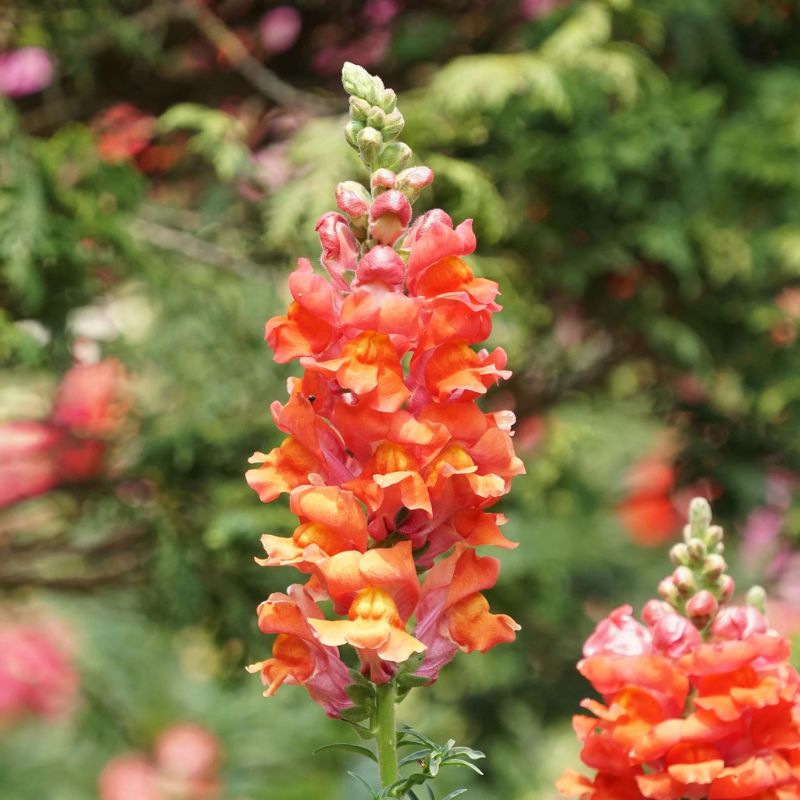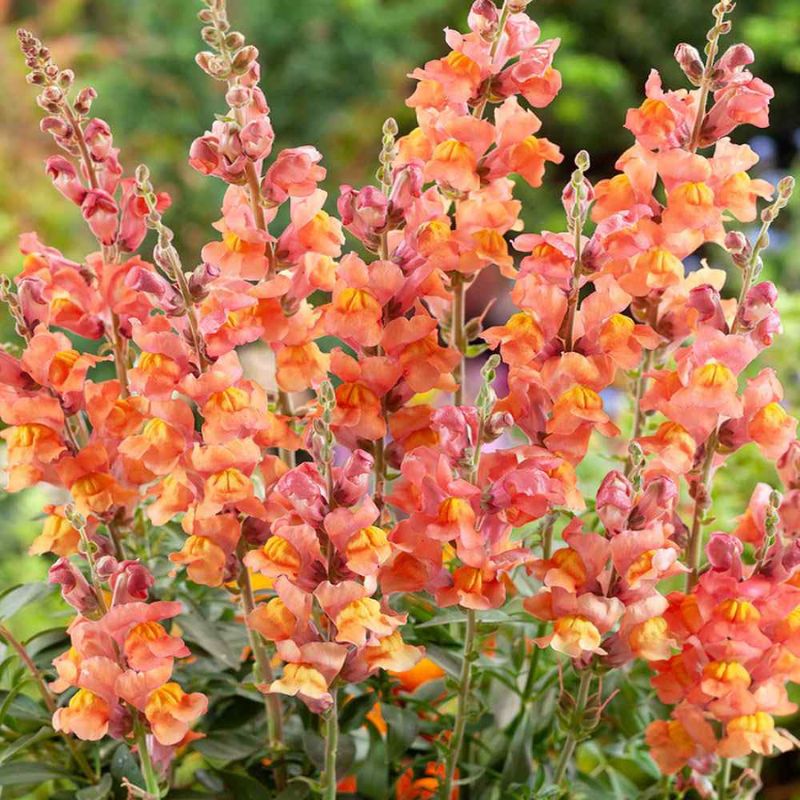- Historical context: Snapdragons, scientifically known as Antirrhinum, have been cultivated for centuries and are beloved for their unique, dragon-shaped flowers that 'snap' open when squeezed.
- Geographical origination: Snapdragons are native to the Mediterranean region, particularly in areas around Spain and Italy.
- Relevant cultural significance: In Victorian times, snapdragons were often used in gardens and floral arrangements to symbolize grace and strength. They were also believed to possess protective qualities.
- Time period of discovery: Snapdragons have been known since ancient times, with records dating back to the Roman Empire.
- Original habitat: Snapdragons originally thrived in rocky, sunny areas with well-drained soil in the Mediterranean region.
- Notable historical uses: Historically, snapdragons were used in traditional medicine for their supposed anti-inflammatory properties. They were also used in folklore to ward off evil spirits.
- Ideal temperature range: Snapdragons prefer cool temperatures, ideally between 55°F to 75°F (13°C to 24°C).
- Soil type: They thrive in well-drained, slightly acidic to neutral soil with a pH of 6.2 to 7.0.
- Sunlight requirements: Full sun to partial shade is ideal for snapdragons. They need at least 6 hours of sunlight daily.
- Watering needs: Snapdragons require regular watering, especially during dry periods. The soil should be kept moist but not waterlogged.
- Planting season: Snapdragons are typically planted in early spring or fall, depending on the climate. In cooler regions, they can be planted in spring, while in warmer areas, fall planting is preferred.
- Germination time: Snapdragon seeds usually germinate within 10 to 21 days.
- Growth cycle duration: Snapdragons can bloom from spring to fall, with a growth cycle lasting several months.
- Common pests and diseases: Common pests include aphids, spider mites, and caterpillars. Diseases such as rust, powdery mildew, and root rot can also affect snapdragons.
- Companion planting advice: Snapdragons pair well with other cool-season flowers like pansies, violas, and sweet alyssum. They can also be planted alongside vegetables like tomatoes to attract beneficial insects.
- Common challenges and solutions: Snapdragons can be prone to fungal diseases in humid conditions. Ensuring good air circulation and avoiding overhead watering can help prevent these issues. Deadheading spent flowers can encourage continuous blooming.
- Nutritional values: Snapdragons are not typically consumed, so they do not have notable nutritional values.
- Health benefits: While not commonly used in modern medicine, snapdragons were historically believed to have anti-inflammatory and diuretic properties.
- Culinary uses: Snapdragons are not commonly used in culinary applications due to their bitter taste.
- Medicinal uses: In traditional medicine, snapdragons were used to treat conditions like inflammation, infections, and digestive issues.
- Other unique advantages: Snapdragons are highly valued for their ornamental beauty, making them a popular choice for gardens, borders, and floral arrangements. Their unique flower shape and vibrant colors add visual interest and attract pollinators like bees and butterflies.






